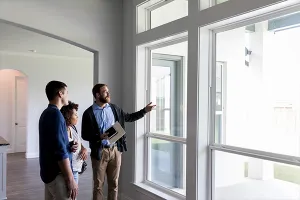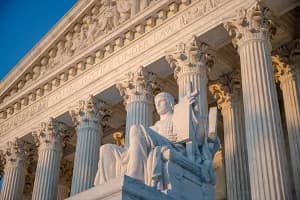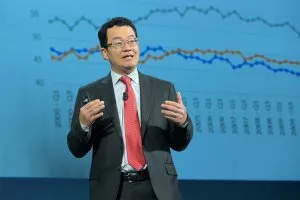What is a 1031 exchange, who benefits from these transactions, and what is the economic impact of these exchanges?
In a presentation in the REALTOR® University Speaker Series held recently, Dr. David Ling discussed the features of like-kind exchanges, the net incremental benefit of these transactions compared to a sell-purchase strategy, and the economic impact of these transactions on revenues, investment activity, and debt financing[1]. Dr. David Lingpdf is the McGurn Professor of Real Estate and Director, Master of Science in Real Estate Program at the Warrington College of Business, University of Florida.
To listen to the webinar, please click here.
Section 1031 of the Internal Revenue Code Basic provides for the deferral of capital gains tax on a relinquished property that is exchanged for a like-kind property. A real estate for real estate exchange qualifies as a like-kind exchange, provided that the relinquished property(ies) and the replacement property(ies) are held for some period of time for productive use in trade or business or as an investment.[2]
Among the highlights of the study are:
1) Most exchange transactions involve small properties, which indicate that small businesses and investors are the main beneficiaries of the Section 1031 like-kind exchange provision. In 2011, 59 percent of all exchange transactions involved a property with a sale price of less than $1 million[3]. Anecdotally, a large qualified intermediary[4] reported that the median proceeds from the sale of a relinquished property in 2015 Q1 was about $400,000.
2) The tax benefit to commercial real estate owners (or the loss to IRS) is often overstated. Based on IRS data from 2003-2012, the deferred gains on commercial real estate exchanges amounted to $18.8 billion, which translate to about $4 billion of deferred tax liabilities.[5] Dr. Ling noted that even the $4 billion in deferred taxes overstates the benefit of an exchange to the taxpayer because it does not consider the negative tax consequences subsequent to the year of the exchange. The negative effects occur because of the carryover of depreciation basis and deductions from the relinquished property into the replacement property. This basis carryover lowers depreciation deductions on the replacement property, increases recapture income when the replacement property is sold, and increases capital gains on the replacement property when sold.[6] The authors estimate that when these tax consequences subsequent to the year of the exchange are taken into account, the benefit revenue loss to the government or the benefit to commercial real estate owners is about $1 to $2 billion, lower than the $4 billion estimate based on deferred tax gains alone.
3) Like-kind exchanges encourage investment spending. Capital expenditures in replacement exchange properties tend to be higher than in regular acquisitions following a taxable sale.[7]
4) Exchangers also tend to use less debt to acquire replacement properties compared to ordinary sellers.[8]
5) The deferred tax is ultimately captured when the replacement property is sold. Approximately 88 percent of investors disposed of their replacement property in a fully taxable sale.[9]
About the Speaker
Dr. David Ling is the McGurn Professor of Real Estate and Director, Master of Science in Real Estate Program at the Warrington College of Business, University of Florida. Prior to this, he was a Research Fellow at the University of Cambridge, and was an associate or visiting professor at the National University of Singapore, the University of Reading (U.K.), and the Swedish School of Economics. He is an author of two textbooks, Real Estate Principles: A Value Perspective, and Real Estate Perspectives: An Introduction to Real Estate. Dr. Ling received his Ph.D. and M.B.A. from The Ohio State University and his B.S. B.A from Central Michigan University. His full CV can be accessed on this sitepdf.
About REALTOR® University Speaker Series
REALTOR® University provides on-line education on real estate and other topics at the MBA and undergraduate levels. The REALTOR® University Speaker Series provides a venue to learn about and stimulate discussion of economic and real estate issues in support of NAR’s mission as the Voice of Real Estate. The Speaker Series presentations can be accessed on this webpage.
[1] This presentation is based on a paper by David C. Ling and Milena Petrova “The Economic Impact of Repealing or Limiting Section 1031 Like-Kind Exchanges in Real Estate”. This was a paper submitted to the Real Estate Roundtable (RER) which issues a call for papers in 2014. The RER is an industry coalition of leading publicly-held & privately-owned RE firms, along with the major RE trade associations.
[2] Properties held for use as personal residences, for stock in trade (e.g., fixer-uppers intended to be sold), and financial assets do not qualify for a 1031 like-kind exchange. The exchange does not have to be simultaneous, but the replacement property (ies) should be identified within 45 days and the exchange completed within the remaining balance of the 180 days.
[3] Authors’ estimate based on data from the Federation of Exchange Accommodators.
[4] Cash proceeds from a relinquished property that is intended for an exchange are parked at a qualified intermediary.
[5] The authors assume a 20% capital gains tax and 25% depreciation recapture tax rate in estimating the tax liabilities.
[6] Net Incremental Value of Exchange = Deferred Tax Liability in Year t
Less: Reduced Present Value of Annual Depreciation Deductions
Less: Increased Depreciation Recapture Tax on Sale of Replacement Property
Less; Increased Capital Gains Tax on Sale of Replacement Property
[7] Authors’ data from CoStar and National Association of Real Estate Investment Funds
[8] Ibid.
[9] Ibid.








